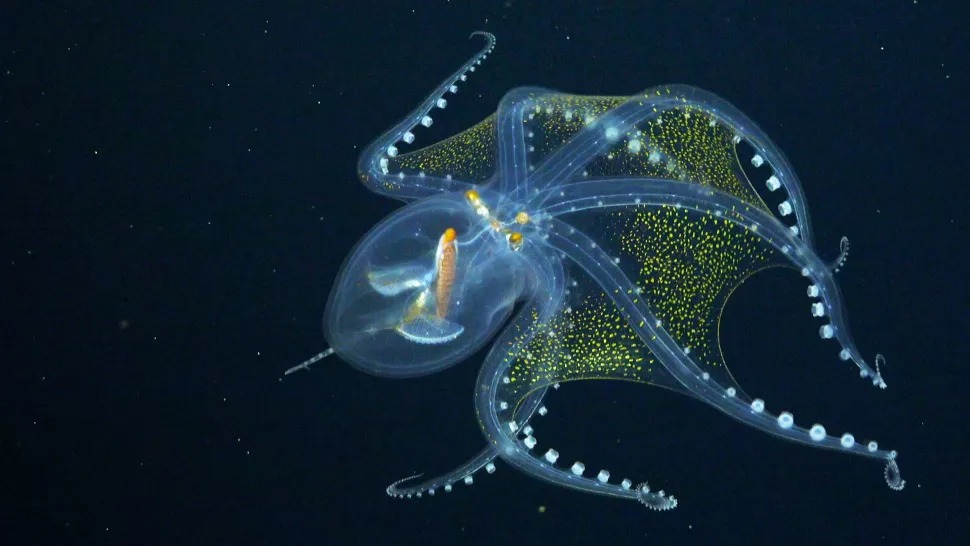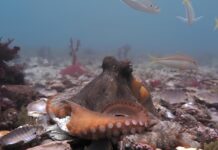This glass octopus, which is rarely seen, was captured on camera by an underwater robot while gently gliding through the deep waters of the Central Pacific Ocean. It disclosed everything, even a glimpse of its interior.
Marine biologists found the elusive glass octopus during a 34-day trip off the remote Phoenix Islands, an island more than 3,200 miles (5,100 kilometers) northeast of Sydney, Australia (Vitreledonella richardi).
Like glass frogs and several types of comb jellies, glass octopuses are nearly entirely transparent, with just their cylindrical eyes, optic nerve, and digestive tract appearing opaque. Given that scientists had to previously learn about them by investigating shards of them in the digestive contents of their predators, the expedition crew reported only two encounters with the glass octopus.

Glass octopuses were not discovered until 1918. The mesopelagic, or twilight zone, is 656 to 3,280 feet (200 to 1,000 meters) below the surface, while the bathyscaphe, or midnight zone, is 3,280 to 9,800 feet (1,000 to 3,000 meters) below the surface. These cephalopods are found in tropical and subtropical regions of the deep ocean.
The cylindrical eye morphology of glass octopuses evolved to reduce the silhouette of the creatures’ eyes when seen from below, according to a 1992 article in the Journal of the Marine Biological Association of the United Kingdom, and is “part of the animal’s camouflage strategy.”

The Schmidt Ocean Institute, led by Wendy and Eric Schmidt, the former CEO of Google, made the discovery of the glass octopus while doing research aboard the research ship Falkor. Scientists from Boston University and the Woods Hole Oceanographic Institution were also on board.
During the mission, which ended on July 8, a team of marine biologists found a small number of what are likely novel aquatic species on nine previously unexplored seamounts. The crew also recorded video of five other seamounts using the underwater robot SuBastian, as well as high-resolution seafloor mapping of more than 11,500 square miles (30,000 square kilometers) of the area surrounding the archipelago.
The world’s largest living creature, the whale shark, and a long-legged crab stealing a fish from another crab were both seen on camera by SuBastian.
After being deployed on 21 dives, SuBastian was able to log more than 182 hours on the ocean floor. Seven of those dives were carried out within the United States’ Pacific Remote Islands Marine National Monument (PRIMNM), which was created in 2009 and enlarged in 2014. Scientists were able to take pictures of the monument, which safeguards marine life. The Falkor also visited areas of the Phoenix Islands that its scientists had explored in 2017, enabling researchers to gather information that will help them comprehend the connections between the larger ecosystem and seamount ecosystems.
“The Ocean offers wonders and promises we haven’t even dreamed of, never alone discovered,” Wendy Schmidt said in a statement. The immense chain of life that starts in the ocean is significant for human health and well-being, which is why we need to intensify our efforts to restore and better understand marine ecosystems worldwide.






